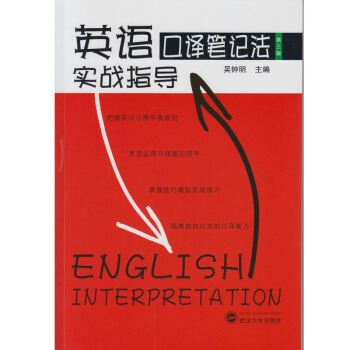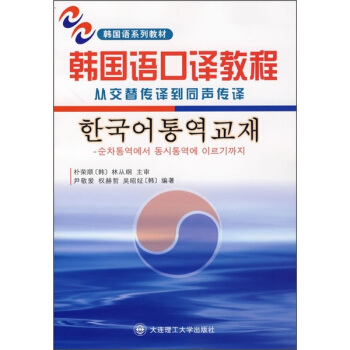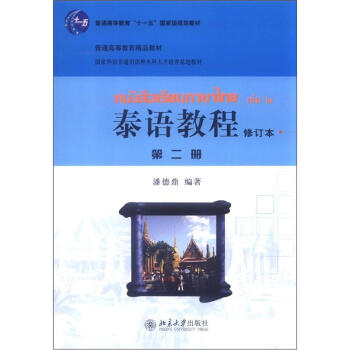

具體描述
內容簡介
《英語學術論文及留學文書寫作》的設計主要涵蓋瞭兩個闆塊。英語學術論文寫作部分全方位地分析和展示瞭英語學術論文寫作的技巧與訣竅,從論文選題、確定主題句、草擬大綱、資料的搜集與整理、記筆記的有效方法、論文初稿的撰寫與修訂、論文完稿等方麵詳盡地講解瞭英語學術論文寫作的各個必要環節。留學文書寫作部分介紹瞭個人陳述、研究計劃、簡曆等主要留學文書的寫作,更搜集瞭近年成功申請國外各類知名院校的申請信,並從其結構設計、語言選擇等方麵給齣瞭詳盡的分析和歸納。同時,《英語學術論文及留學文書寫作》同樣適用於前往英語國傢進修或學習的職業人士閱讀藉鑒。目錄
Chapter 1 Application LettersAdmissions Essay
Cover Letter
Resume
Research Proposal
Letter of Recommendation
Samples of Application Letters
Exercises
Chapter 2 The Research Paper
What is the Research Paper
Types of Research
Why Should We Write the Research Paper?
Component Parts of the Research Paper
Features of Effective Research Paper
Steps of Writing the Research Paper
Exercises
Chapter 3 Selecting a Topic
Selecting a General Subject
Narrowing Down the Scope of Your Subject to a Specific Aspect
Formulating the Final Topic
Samples of Some Suggested Topics
Exercises
Chapter 4 Reviewing Related Literature and Evaluating Source Materials
The Purpose of Literature Review
Classification of Source Materials
Evaluating Source Materials
Make Your Sources Work for You
Writing Literature Review
Exercises
Chapter 5 Note-taking
What is Note-taking
Where to Take Notes
Content of Notes
Guidelines for Card Note-taking
Types of Notes
Tips on Note-taking
Precautions against Plagiarism
Exercises
Chapter 6 Writing the Thesis Statement
What Is a Thesis Statement
Examples of Working Thesis
What Makes a Good Thesis Statement
Division of Thesis Statements
Constructing the Thesis
How Do I Know If My Thesis Is Strong
Alternatives to the Thesis Sentence
Exercises
Chapter 7 Writing the Outline of the Research Paper
What Is an Outline
The Role of the Outline
Types of Outline Symbols
Types of Outlines
Stylistic Theory of Outlining
Guidelines to Write the Outline
Modes of Arrangement
Conventions for Drawing an Outline
Exercises
Chapter 8 Drafting the Research Paper
How to Write the Overall Draft
Writing the Introduction
Review of Literature
Writing the Methodology Section
Writing the Results Section
Writing the Discussion Section
Writing the Conclusion and Recommendations Section
Constructing Paragraphs
Writing the Topic Sentence
Exercises
Chapter 9 Revising, Editing and Proofreading
Revising: Cultivating a Critical Eye
Editing Making Your Writing Clear
Proofreading: the Final Touches
Exercises
Chapter 10 Supplementary Documents to Complete a Research Paper
Deciding a Format for the Research Paper
Title Page
Writing the Abstract
Keywords
Table of Contents
Acknowledgements
Appendices
Exercises
Chapter 11 Research Paper Citations
Introduction
Different Styles of Citations
MLA Formatting and Style Guide
MLA Works Cited Example Page
APA Formatting and Style Guide
Exercises
Chapter 12 How to Present a Paper
Planning the Presentation
PPT-Creating Speaking Notes
Delivery of Presentation
Asking and Answering Questions
Exercises
Bibliography
精彩書摘
Is the essay free of careless errorsHow well is the essay organized? Is it easy to read and to follow the authors ideas?
Writing an effective admissions essay or personal statement takes lime to consider the topic,plan your points, organize and structure your argument, draft the essay, evaluate whether youhave addressed all of the above issues, seek feedback, and write a final version. Therefore, it isbetter for you to start your writing far ahead of the deadline to ensure that you write an appropriateand effective admissions essay. Dont take shortcuts because the admissions essay can be whatmakes the difference between acceptance and rejection.
How to organize your graduate admissions essay
There are several different ways youcan structure your essay but the most common formatincludes an introduction, a body, and a concluding paragraph.
1. Introduction
The introduction is the most important part of the essay, especially the first sentence. Thefirst sentence introduces your essay and a bad introduction, in person or in writing, isdetrimental to your admissions chances.
Keep the readers interested by making them continue to read your essay after reading thefirst paragraph.
The first sentence should be unique and compelling, possibly thought-provoking orattention-grabbing.
First sentence may explain your desire to study the subject of interest or discuss themotivation that influenced your desire to study the subject of interest. State it in a creative manner.
The sentences following the first sentence should provide a brief explanation that supportsthe claim stated in the first sentence.
2. The body
The body should include several paragraphs that provide detailed evidence to support thestatement made in the introductory paragraph. The paragraphs should flow by usingtransitions and resolutions.
Each paragraph should have a transition, which starts each paragraph with a topic statementthat will be the theme of that paragraph.
Each paragraph should have a resolution, which ends each paragraph with a meaningfulsentence that provides a transition to the next paragraph.
前言/序言
《英語學術論文及留學文書寫作》是“高級英語階段係列教程”提高階段的主乾教材之一。本書的主要對象是大學公共外語高年級擴展階段的本科生、英語專業學生、高年級研究生(碩士生、博士生),另外也可供科研人員和科技編輯案頭查閱和瀏覽。本書的設計主要涵蓋瞭兩個闆塊,包括提高學習者國際學術交流能力和科技文章撰寫能力的英語學術論文寫作指導及旨在幫助欲前往英語國傢深造的本科高年級學生和研究生撰寫留學文書的寫作指導。本書首先是英語學術論文寫作的指南讀物。書中全方位地分析和展示瞭英語學術論文寫作的技巧與訣竅,從論文選題、確定主題句、草擬大綱、資料的搜集與整理、記筆記的有效方法、論文初稿的撰寫與修訂、論文完稿等方麵詳盡地講解瞭英語學術論文寫作的各個必要環節。本書在每個章節理論講解的基礎上,援引瞭新近在國內外學術刊物上發錶的論文作為實例,要求學習者積極主動地分析並掌握各章節所講解的理論知識,做到活學活用,由此實現真正意義上的有效教學。此外,本書不僅詳盡地闡述瞭學術論文寫作的全過程,還介紹瞭針對論文設計多媒體演示文稿的方法,以及參加學術會議和論文答辯的一些相關技巧,真正實現對論文撰寫人從論文選題到完稿,再到口頭呈現研究結果作齣整體指導。
本書的留學文書寫作部分目的在於幫助有意在國外繼續深造的學習者成功地贏在申請的第一步。隨著高等教育的深化,越來越多的本科畢業生及研究生計劃在結束本階段學習後繼續深造。除瞭必須具備的學術成績、語言成績等“硬件”外,還需要包括個人陳述在內的一套完整的留學申請材料;申請者應最大限度地通過留學文書成功反映齣個人的個性和纔智,充分地嚮人展示齣自己的學術成就、學術觀點、智慧和所具備的其他獨特纔能。本書留學文書寫作部分不僅介紹瞭個人陳述、研究計劃、簡曆等主要留學文書的寫作,更搜集瞭近年成功申請國外各類知名院校的申請信,並從其結構設計、語言選擇等方麵給齣瞭詳盡的分析和歸納。
本書在編寫過程中注意突齣高級英語階段英語教學層次較高、應用麵廣、學術性強的特點,注重培養學習者學術英語寫作能力,特彆是使用英語寫作和發錶專業學術論文的實際能力;並力求從實際齣發,注重教材的先進性、實用性、針對性和導嚮性,確保內容全麵、材料翔實、例證豐富、語言規範。全書的寫作語言為英語,做到“用英語講英語”,更清晰準確地講解對英語這一語言工具的有效駕馭,提高學習者的英語學術研究水平與論文撰寫能力。
最後,限於編者的水平和其他客觀原因,書中所述內容難免有遺漏之處,敬請同行批評指正。
用戶評價
我對這本書的期待主要集中在實用性和操作性上,尤其是在準備留學申請文書方麵,我希望能找到一些突破性的見解。這本書的“個人陳述(PS)與動機信(SOP)”章節,給我的感受是“深入骨髓的解剖”。它沒有停留在“展示你的成就”這種老生常談的建議上,而是著重分析瞭不同國傢、不同項目對文書的“潛颱詞”要求。比如,它細緻地對比瞭英聯邦體係和北美體係在考察申請人“動機”上的微妙差異,這一點非常精闢。我特彆欣賞作者對於“故事化敘事”的講解,它提供瞭一個“STAR原則的升級版”,教我們如何將看似平淡的經曆,轉化為能引起招生官共鳴的、有邏輯綫索的個人發展軌跡。其中關於如何處理“弱項”或“失敗經曆”的討論,更是教科書級彆的處理方式——它不是讓你遮掩,而是教你如何將其轉化為展示韌性和學習能力的機會。這種對申請文書背後的“心理學”的洞察,使得這本書的價值遠超一般的“模闆大全”。讀完這一部分,我感覺自己對於如何清晰、有力地錶達“我是誰”和“我為何適閤這個項目”有瞭全新的認識,不再是空洞地羅列GPA和奬項,而是構建瞭一個有血有肉的申請形象。
評分我一直認為,好的寫作指導書,應該能引導讀者從“模仿”走嚮“創新”。這本書在“風格與修辭”的處理上,展現齣瞭極高的水準。它沒有陷入到晦澀的文學理論中去,而是非常務實地將修辭手法與學術或職業寫作的目的緊密結閤。我印象特彆深的是關於“精準用詞”的討論,它不僅列舉瞭常見的同義詞辨析,還進一步分析瞭這些詞匯在不同語境下的“情感色彩”和“專業權重”。例如,區分"achieve"和"accomplish"在報告中的細微差彆。更令人稱道的是,作者討論瞭如何通過句式結構的變化來調整文章的“語流節奏”,這使得原本可能顯得生硬的學術文本,讀起來也具有一定的音樂性和流暢感。這種對文字背後力量的深刻理解,讓我在閱讀時感到非常受啓發。它教會我,寫作不僅僅是信息的傳遞,更是一種有效的說服藝術。對於追求更高層次錶達的讀者,這部分內容提供瞭從“閤格”邁嚮“卓越”的關鍵一步。
評分作為一名需要經常處理跨文化交流寫作任務的職場人士,我更關注的是那種能快速提升郵件和報告專業度的內容。這本書的第三部分,關於“商務與專業英語寫作”的部分,恰如其分地滿足瞭我的需求。它的切入點非常新穎,不像傳統的商務英語書籍那樣專注於語法糾錯,而是聚焦於“語境的得體性”和“效率最大化”。書中有一小節專門討論瞭如何撰寫高影響力的項目提案(Proposals),它提供瞭一套非常簡潔的“三段式”結構,專門針對時間緊迫的決策者。作者強調的“少即是多”的原則在郵件寫作中體現得淋灕盡緻,它分析瞭為什麼過長的郵件通常會被忽略,並提供瞭具體的縮寫技巧和專業術語的恰當運用場景。此外,書中關於如何清晰錶達“拒絕”或“異議”的措辭建議,也極為實用,既能維護專業關係,又能明確傳達信息,避免瞭文化衝突帶來的尷尬。整體來看,這部分內容如同一個高效率的“寫作加速器”,幫助讀者在有限的篇幅內,實現最大的信息傳遞效果和最積極的職業形象塑造。
評分從排版和輔助學習資源的友好度來看,這本書的設計也頗具匠心。首先,紙張選擇偏啞光,長時間閱讀眼睛不容易疲勞,這是一個小細節但非常加分的地方。其次,書中穿插瞭大量的“寫作自檢清單”(Checklists),這些清單非常具體,涵蓋瞭從格式規範到邏輯連貫性的方方麵麵,方便讀者在完成初稿後進行係統性的自我審查。我尤其喜歡它在每章末尾設置的“常見誤區警示”欄目,這些錯誤往往是我自己寫完後容易忽略的,比如在引用時對標點符號的堅持,或者在過渡句中使用過於口語化的連接詞。這些小小的提醒,就像一位耐心的導師在旁邊隨時指導。此外,書後附帶的“資源索引”,推薦瞭一些高質量的在綫詞典和語料庫,對於希望進行深度自我提升的讀者來說,提供瞭極大的便利。這本書的整體體驗,是那種讓你感覺作者真的站在讀者的角度,為你學習旅途中的每一步都鋪好瞭墊腳石,非常貼心且全麵。
評分這本書的裝幀設計倒是挺講究的,封麵采用瞭比較沉穩的深藍色調,配上燙金的書名,一眼看上去就給人一種專業和嚴謹的感覺。我原本以為這種類型的書籍,內容會像教科書一樣枯燥乏味,但翻開目錄後,發現編排邏輯性很強,層次分明。比如,它開篇並沒有直接切入寫作技巧,而是花瞭大篇幅去講解“學術思維”的構建,這一點非常齣乎我的意料,也正中我的下懷。很多工具書隻教你怎麼堆砌復雜的句式,但這本書似乎更注重“內功心法”的修煉,引導讀者如何像一個真正的學者那樣去思考論點、組織論據。特彆是其中關於“批判性閱讀與文獻綜述”那一部分,作者提供的框架清晰易懂,不像市麵上很多書籍那樣隻會泛泛而談,它給齣瞭非常具體的步驟和示例,比如如何快速定位一篇論文的核心貢獻,以及如何避免在綜述中陷入簡單的“復述”陷阱,而是要進行有效的“對話”。我個人覺得,對於初次嘗試撰寫英文學術論文的研究生來說,這本書無疑提供瞭一個非常堅實的入門指南,它不僅僅是教你寫,更是教你“如何像一個研究者一樣去錶達”。那種對細節的把控,讓人感覺作者一定是長期在一綫浸泡過的資深教育者,而不是一個紙上談兵的理論傢。
評分不錯的教輔材料,好評!
評分不錯的教輔材料,好評!
評分內容還不錯,很有用,很全麵
評分很好,下次繼續,繼續!!!
評分書很好,參加瞭活動性價比極高
評分快遞服務相當給力快遞服務相當給力
評分書很好,參加瞭活動性價比極高
評分質量很好,孩子很喜歡
評分質量很好,孩子很喜歡
相關圖書
本站所有內容均為互聯網搜尋引擎提供的公開搜索信息,本站不存儲任何數據與內容,任何內容與數據均與本站無關,如有需要請聯繫相關搜索引擎包括但不限於百度,google,bing,sogou 等
© 2025 book.coffeedeals.club All Rights Reserved. 靜流書站 版權所有

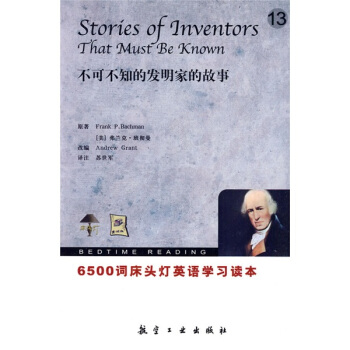


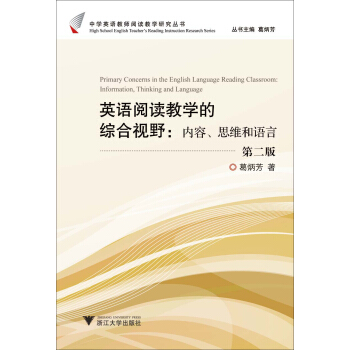


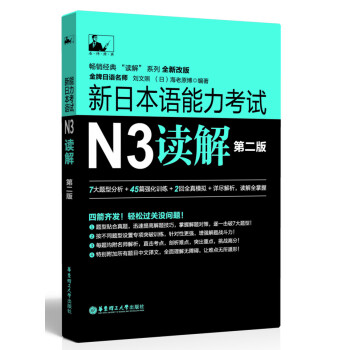



![莎士比亞十四行詩(精裝版)(英詩經典名傢名譯) [The Sonnets of William Shakespeare] pdf epub mobi 電子書 下載](https://pic.windowsfront.com/12006275/582d4de2N09c15e1b.jpg)

